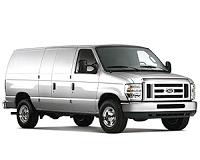 |
Bonn, Germany (SPX) Dec 29, 2010 Several studies forecast that by 2050, it will be possible for Germany to obtain a high proportion of its energy from renewable sources. DLR also has significant involvement in the expansion of wind, hydroelectric and solar power stations. But what specific changes can be anticipated here? The DLR Executive Board Member responsible for Energy and Transport research, Ulrich Wagner, provides insight into future prospects. In June 2010, DLR, along with 30 other experts, presented a global energy scenario commissioned by Greenpeace International and the European Renewable Energy Council (EREC). By 2050, up to 80 percent of energy needs could be covered by renewable sources, and this could cut emissions of carbon dioxide, the greenhouse gas, massively. "The important thing is not just to build renewable energy power stations as we go along, but also to raise the efficiency levels of conventional power stations," says Wagner. In parallel with the expansion of renewables, these coal and gas-fired power stations are scheduled to remain in service for many years.
Solar thermal power as an export star Nevertheless, it is extremely important to further improve these relatively mature technologies because they constitute an important export asset for the domestic industry in Germany. "I believe that there is great potential for the expansion of wind power on the open sea," says Wagner. However, to make efficient use of the strong and steady winds out at sea, the power generation infrastructure needs to be redesigned completely. It is not sufficient to simply copy the wind turbine technology used for infrastructure on terra firma if the full potential of offshore wind power is to be harnessed effectively. "For these new systems, we will have much to learn from our DLR colleagues, with their extensive experience in aerospace," says Wagner with conviction.
The challenge of heat storage facilities "These power stations are already operating with heat storage units which means that they are able to contribute electrical power to the mains grid in the evenings or even at night," says Wagner, while also admitting that a great deal of research still needs to done in this area. "We have to drive forward heat storage at the highest possible temperatures to enable these storage units to operate efficiently as well as cost-effectively. It would constitute tremendous progress if we were able to come up with a solution here." Reinforcement of the European electrical power grid is a key factor driving the development and construction of these new power stations. To transport electrical power from the generator to the consumer with minimal transmission losses, network operators are already demanding 40,000 kilometres of new power lines for Europe. While DLR is not involved with the technology for these electricity highways, DLR researchers are hard at work on detailed system analyses to establish where it makes most sense to expand performance capacities.
The future of electric mobility Certainly there is no reason why passenger cars and smaller commercial vehicles should not be taking to the roads powered by electricity, or with hybrid or hydrogen drives. The third of these options calls for stable fuel cells with long service lives, and things have recently gone quiet in discussions about the future of transport. "Nonetheless, the fuel cell has always been, and remains, an interesting option," states Wagner. A further boost for electric mobility is expected to come from mobile power storage units (or batteries) with high charge capacities. "For this vision of the future, we are currently setting up a battery research centre in Ulm with our partners," says Wagner. The green light will be given in January 2011, when a large number of storage technologies not yet ready for the market - the lithium-air battery for example, will start to receive serious attention. In the years to come, DLR will further reinforce its activities associated with solar power stations, energy and storage systems, and mobility technologies for the future. "Energy and transport, building on the successes already achieved, are set to become an even more important focal area for DLR," adds Wagner with conviction.
Share This Article With Planet Earth
Related Links European Renewable Energy Council (EREC) Powering The World in the 21st Century at Energy-Daily.com
 Icom North America Wins EPA Approval For Bi-Fuel Propane Engines
Icom North America Wins EPA Approval For Bi-Fuel Propane EnginesNew Hudson MI (SPX) Dec 21, 2010 Icom North America has attained the first U.S. Environmental Protection Agency approval for its Liquid Injection Propane bi-fuel systems for the Ford 6.8 liter engines, produced for Ford Econoline vans. Ralph Perpetuini, CEO of Icom North America, said his company was given the green light by the EPA to convert applicable Ford 6.8 liter gasoline engines for E-250, E-350 and E-450 platforms ... read more |
|
| The content herein, unless otherwise known to be public domain, are Copyright 1995-2010 - SpaceDaily. AFP and UPI Wire Stories are copyright Agence France-Presse and United Press International. ESA Portal Reports are copyright European Space Agency. All NASA sourced material is public domain. Additional copyrights may apply in whole or part to other bona fide parties. Advertising does not imply endorsement,agreement or approval of any opinions, statements or information provided by SpaceDaily on any Web page published or hosted by SpaceDaily. Privacy Statement |